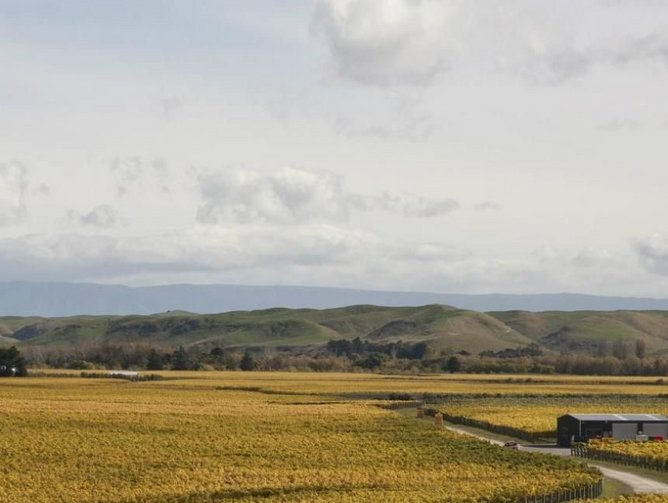Innovation drives growth at New Zealand’s most awarded winery
Quality, innovation and sustainability are not the first words that come to mind when you’re relaxing with a crisp glass of pinot gris. But for wine producers Villa Maria, New Zealand’s most awarded winery, these three tenets are at the core of everything it does.
Sustainability is a concept that every business ought to be focused on, and that some businesses are truly committed to.
But long before sustainability was the latest trend to invigorate business communities, wine producer Villa Maria was looking to the future from every possible angle.
Take its involvement in initiatives like Sustainable Winegrowing New Zealand (SWNZ), for instance. Villa Maria has been a member for more than 20 years, since SWNZ’s inception in 1995. More recently it joined CEMARS, an internationally recognised carbon reduction program, and 27 percent of its vineyards are certified organic.
These programs don’t just illustrate Villa Maria’s commitment to the environment. Rather, sustainability is threaded into every element of its operations because many times, it makes good business sense to operate this way.
“We’re a family-owned business, founded by Sir George Fistonich in 1961, and sustainability is part of the core values of who we are,” explains Chief Operating Officer, Richard Thomas.
“You have to take care of your environment, work with the communities around you, and work with your staff and teams to have a business that is sustainable for the long-term. If you don’t behave in a sustainable way, you simply won’t have a company in 200 years, so this approach is bred into the way that we run the business.”
Looking ahead 200 years could almost be considered a short-term view at Villa Maria, where the leadership team prefers an outlook of 500-years and beyond.
Thomas explains: “We don't think quarterly; we think annually and 10 to 20 years away, and even further. Every decision we make has an underlying thread: is this a good decision not just for the next year, but for the next 10 years? Twenty years? And even 500-800 years from now?
“That’s how we have to be thinking because for us, thinking sustainably means considering what the business needs to ensure we are still successful several generations from now.”
One such example of sustainability and innovation at work is its approach to energy use. With five wineries spread across the country, Villa Maria leverages local climate conditions to help process its wine with maximum efficiency.
“We use the cool night air to help with the cooling of our wineries when going through the fermentation process, instead of relying solely on an energy intensive refrigeration system,” Thomas says.
“We generate a lot of heat through wine fermentation, and so we also turn that warmth back into energy to use in the winery. These are sustainable practices for the business, but they also just make common sense.”
Under the leadership of Sir George – Villa Maria’s owner and founder was knighted in 2009, for his services to the New Zealand wine industry – Thomas says innovation is similarly at the forefront of their everyday operations.
“Sir George is one of the key figures and a driving force in New Zealand wine. Many successful people in the industry today got their chance and their learning at Villa Maria over the years, and Sir George made many decisions that had a much larger influence. Moving to a 100 percent screw cap closures is a great example of this,” he explains.
This transition began almost two decades ago, back when wine was almost exclusively sold with a cork sealing it shut.
Villa Maria transitioned to a screw cap and by 2001, it had introduced screw caps across 100 percent of its wine range.
This early adoption was motivated largely by quality and innovation, and while Richard remarks they Villa Maria was “definitely one of the major catalysts in the New Zealand industry” to move away from cork, he says their decision to do so was “not without controversy” in the market.
“Sir George really bought into it from a quality perspective. In those days, there was a high failure rate out of cork. Out of a case of 12 bottles, there would be one to two bottles that would not perform optimally due to corking or oxygenation of the wine. When you’re talking about quality and two out of 12 are not performing as they should for their customer, then that’s not a good outcome,” he says.
“Screw caps are about ultimately having control over quality, because you don’t have those oxidisation issues. Some of our customers globally were more attached to cork, and the theatre that went with cork, but because of our commitment to quality and giving our customers a great wine experience, we felt it was important to move to screw cap. It works very well for us and we now get fantastic product performance. A lot of research also shows that wine ages well with screw caps.”
At Villa Maria, further innovations were to come around managing its bottle labeling process.
On the production line, Villa Maria installed a camera system that helps to detect faults in bottle labeling. The bespoke system was created in house when it realised it “couldn’t make it as good as we wanted it to be” when using existing products on the market.
“Internally, within Villa Maria and with a technology partner in New Zealand, we created an innovative fault-detecting camera that runs on our bottling line,” Thomas says.
“We’ve now shared it with others in the industry, because we felt it was a good innovation and we were happy to show people how it works. Our innovation is also in our production work, alongside our wines, because we want innovation to be embedded in our culture.”
This industry-aligned generosity is another ethos that runs through the business, and is evident in its membership of Family of 12, an organisation comprised of a dozen like-minded New Zealand wineries.
From wine tastings to marketing events, it stages a range of programs globally as “we believe in that sense of being bigger and more effective together,” Thomas says.
“We’re uniting together to get people all around the world drinking New Zealand wine, because we’re a long way from anywhere here! That desire to try and get people to experience New Zealand wines and to work together with a long-term view, so that each of us as individual companies are successful, has been a big part of the growth of all New Zealand wines,” he says.
“The joy of working for Villa Maria is that we’re working with sensational products. George started this business many years ago and his daughter Karen is chairperson of the board, so our culture is still very much family-oriented. Our success is partly because of the unique way we look at the world – which is simply that we want to bring people fantastic New Zealand wine experiences. As a result, we’re always focused on the quality of our produce and the value and experiences we can bring to our customers.”





